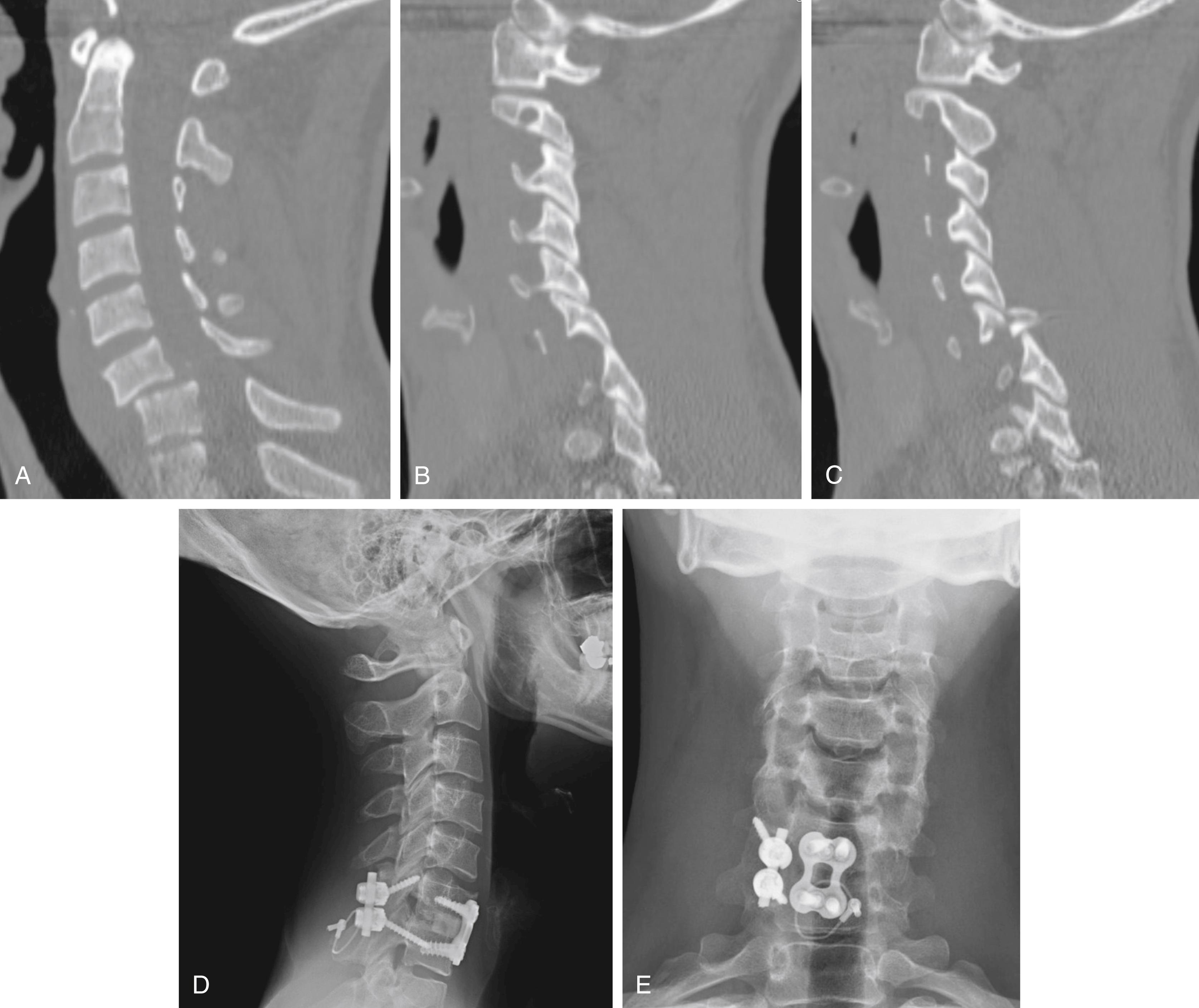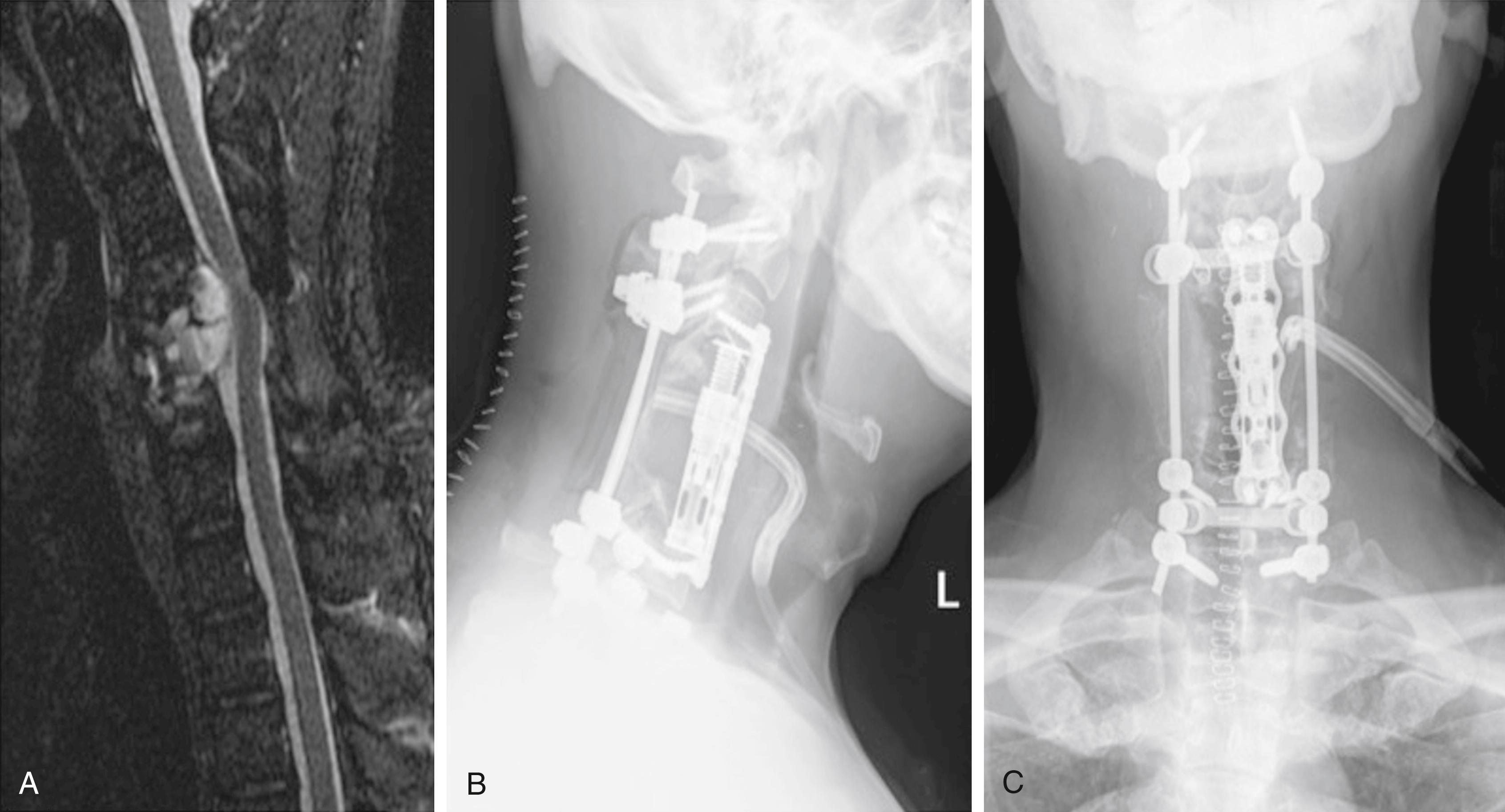Physical Address
304 North Cardinal St.
Dorchester Center, MA 02124
Posterior cervical instrumentation is effective in stabilizing the subaxial cervical spine.
Acceptable choices of instrumentation include lateral mass screw fixation and cervical pedicle screws.
Careful preoperative planning with an understanding of patient-specific anatomy and instrumentation options is essential.
Interfacet grafts may be useful adjuncts to dorsal instrumentation to treat radiculopathy or enhance the prospect of fusion.
Adaptations in cervical instrumentation techniques have provided a wide range of capabilities for spinal reconstruction. For instance, multiplanar and multisegmental instability are successfully treated with cervical fixation. Internal stabilization has the advantage of providing neural protection until fusion occurs, lessening the number of fused segments, facilitating immediate postoperative mobilization, and minimizing the need for external orthoses. Posterior cervical fixation techniques have been developed, and each has unique advantages and disadvantages.
This chapter discusses posterior cervical instrumentation techniques, including etiologies of subaxial cervical instability and operative techniques for instrumentation, with a particular emphasis on modern instrumentation techniques and emerging technologies. This chapter will also emphasize complication management and avoidance. Although biomechanical concerns are critical in the selection of the proper method of stabilization, they are discussed only briefly in this chapter and covered more extensively in the chapter on cervical construct planning.
Causes of subaxial cervical instability include trauma, degenerative disease, neoplasm, and infection. Patients may also develop instability after decompressive surgery with postoperative kyphosis, facet joint disruption, or as a result of a complete facetectomy performed with a tumor resection. Traditionally, the management of subaxial cervical instability consisted of traction or an orthosis. However, these techniques have a variety of complications, and they have been shown not to provide long-term stability in many cases. Consequently, cervical fusion techniques have been developed to instrument the dorsal subaxial cervical spine for immediate stabilization.
The decision to perform surgery and the specific technique used must be determined on an individual basis. These decisions are typically influenced by the patient’s overall medical and neurological condition, the type and location of the pathology, the degree of instability, and the number of levels affected. This section will briefly discuss these issues as they pertain to trauma, neoplasia, and degenerative disease.
Posterior cervical instrumentation is commonly used in a trauma setting. The main goals in the management of cervical spine injuries are realignment, decompression of the neural elements, and stabilization. If the spine is adequately aligned, without the need for decompression, then external immobilization with a collar may be all that is required to protect the neural elements. Posterior cervical spine instrumentation should be considered in trauma patients who require an open reduction or a dorsal cervical decompression. Many patients can achieve long-term stabilization with fixation across the affected levels; however, it may be necessary to incorporate additional levels or a combined anterior-posterior approach, depending on the fracture pattern and extent of instability ( Fig. 107.1 ).

The instability caused by tumor erosion of the bony elements, or secondary to decompressive techniques used in tumor resection, can be successfully managed with posterior cervical instrumentation. Depending on surgeon preference, some elect to pursue laminectomies with or without facet resection for tumor resection, with the plan for delayed instrumentation only in the setting of progressive deformity. Some surgeons argue that the absence of instrumentation allows a more straightforward evaluation of the tumor on postoperative magnetic resonance imaging (MRI) compared with hardware artifact that is seen on MRI after instrumentation. Other surgeons, including us, and other centers prefer to place instrumentation at the time of an index tumor resection. The number of motion segments to be instrumented depends on the location and extent of tumor involvement. Commonly, multilevel anterior corpectomy (>2 levels) and cage reconstruction for an anterior approach for tumor resection warrant posterior supplementation with hardware. Most spine surgeons recommend posterior subaxial instrumentation that bridges any anterior cage reconstruction for a three-level corpectomy or more ( Fig. 107.2 ).

Spondylotic disease is also an indication for the use of posterior cervical instrumentation techniques. A common complication of patients with spondylotic disease undergoing decompression alone is postoperative kyphosis. Appropriate instrumentation at the time of the decompression can decrease the risk of kyphosis in patients with abnormal segmental motion or with loss of lordosis or kyphosis. In addition, posterior fusion may be a better option for revisions of failed ventral arthrodesis. ,
Become a Clinical Tree membership for Full access and enjoy Unlimited articles
If you are a member. Log in here